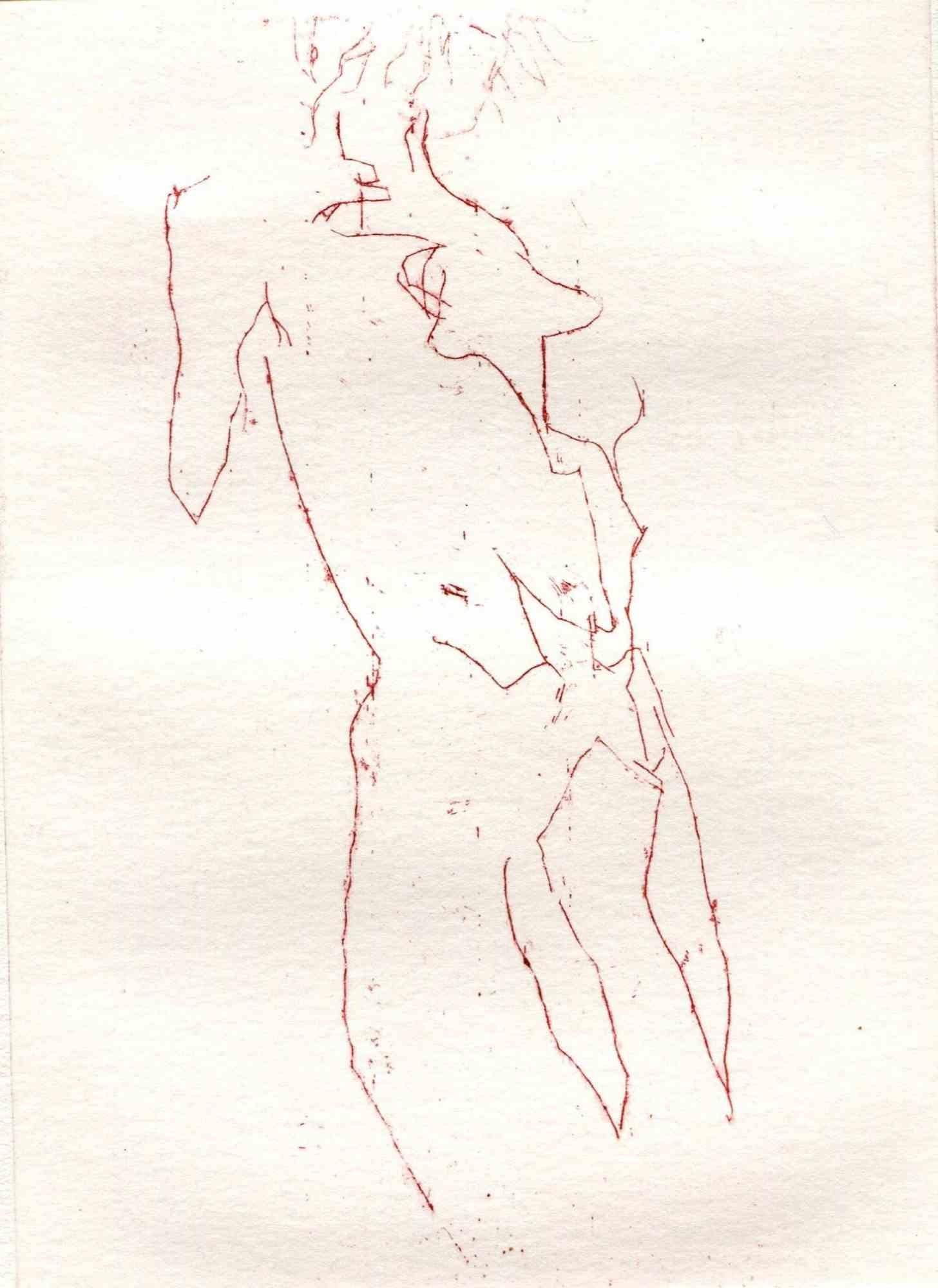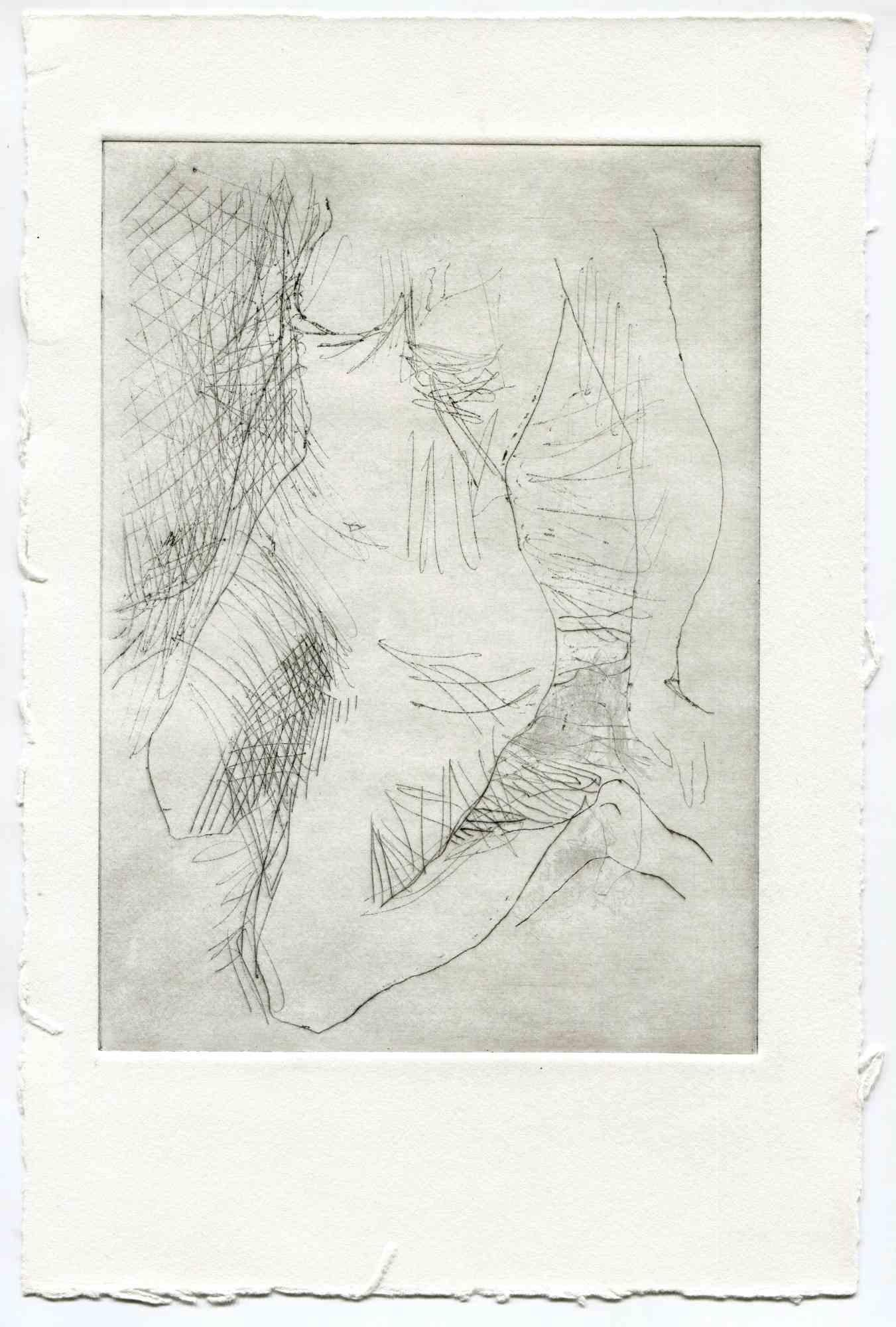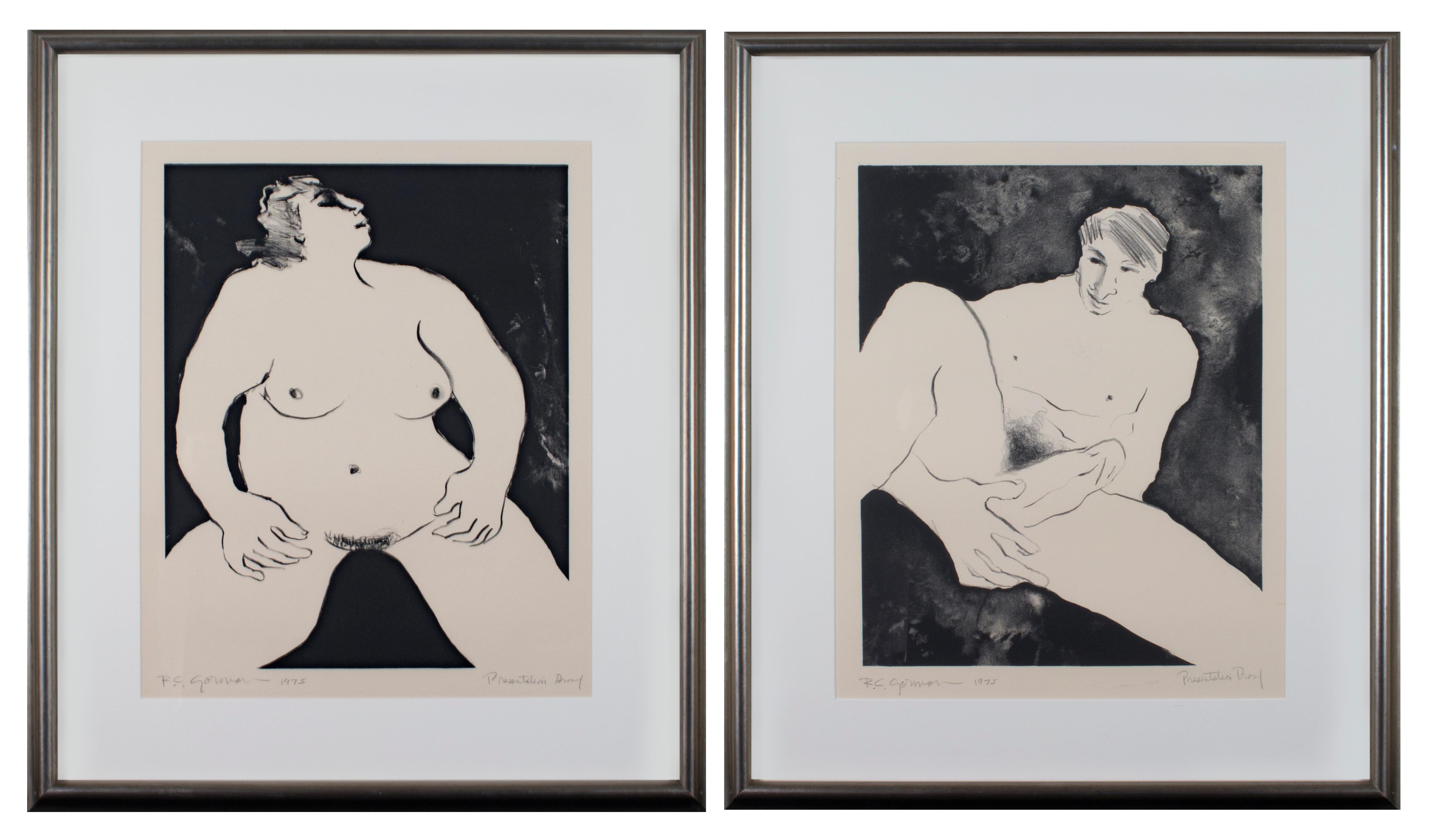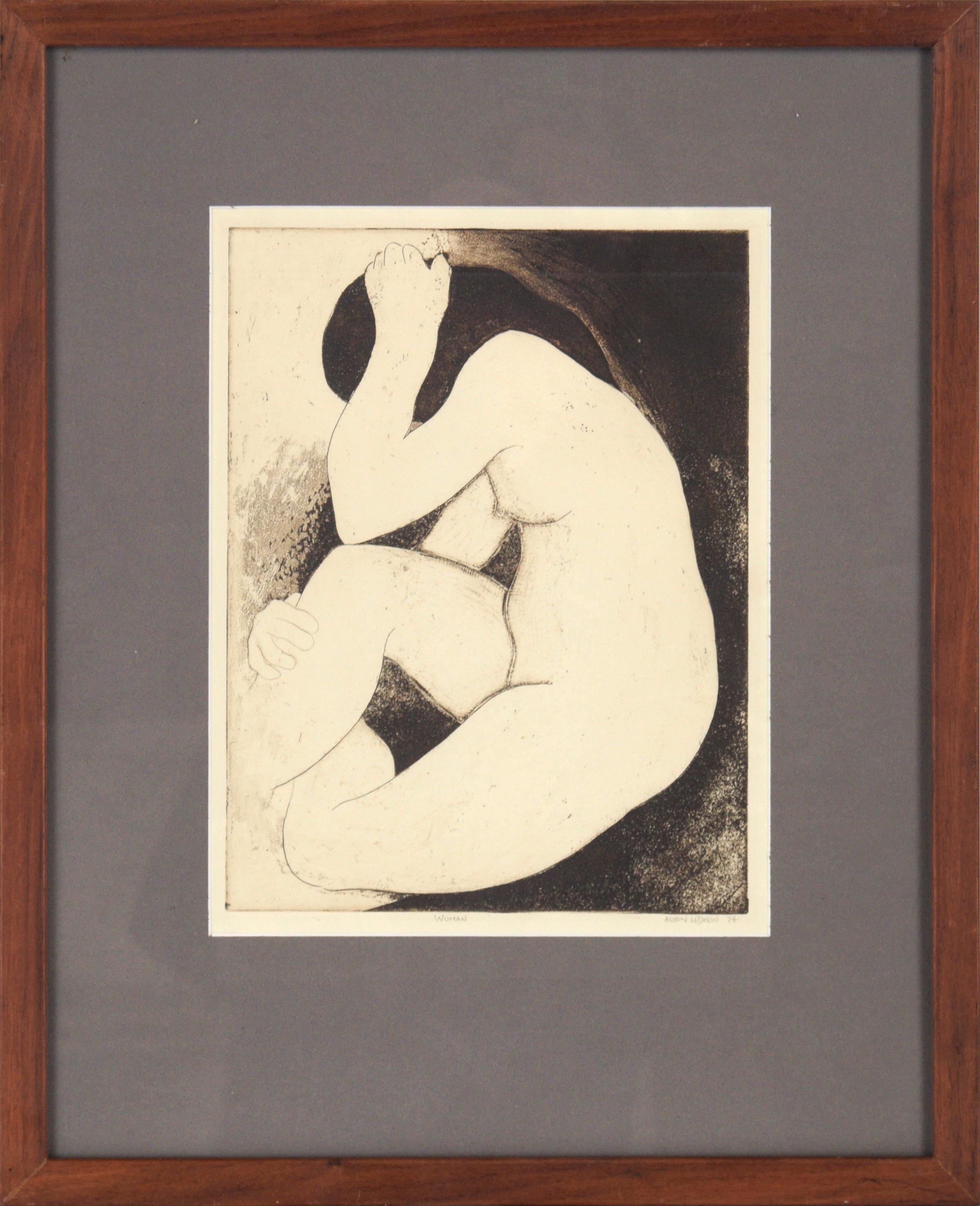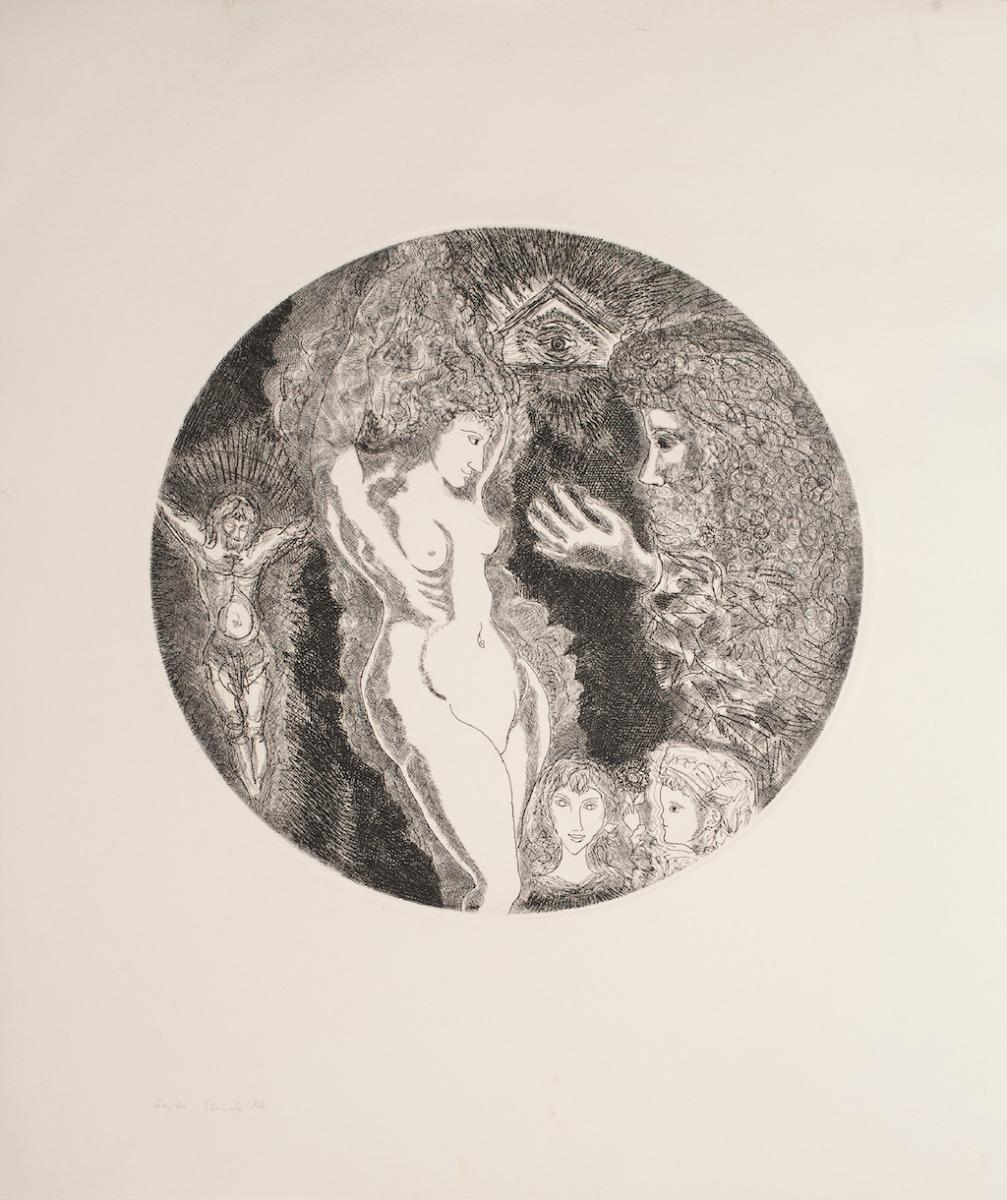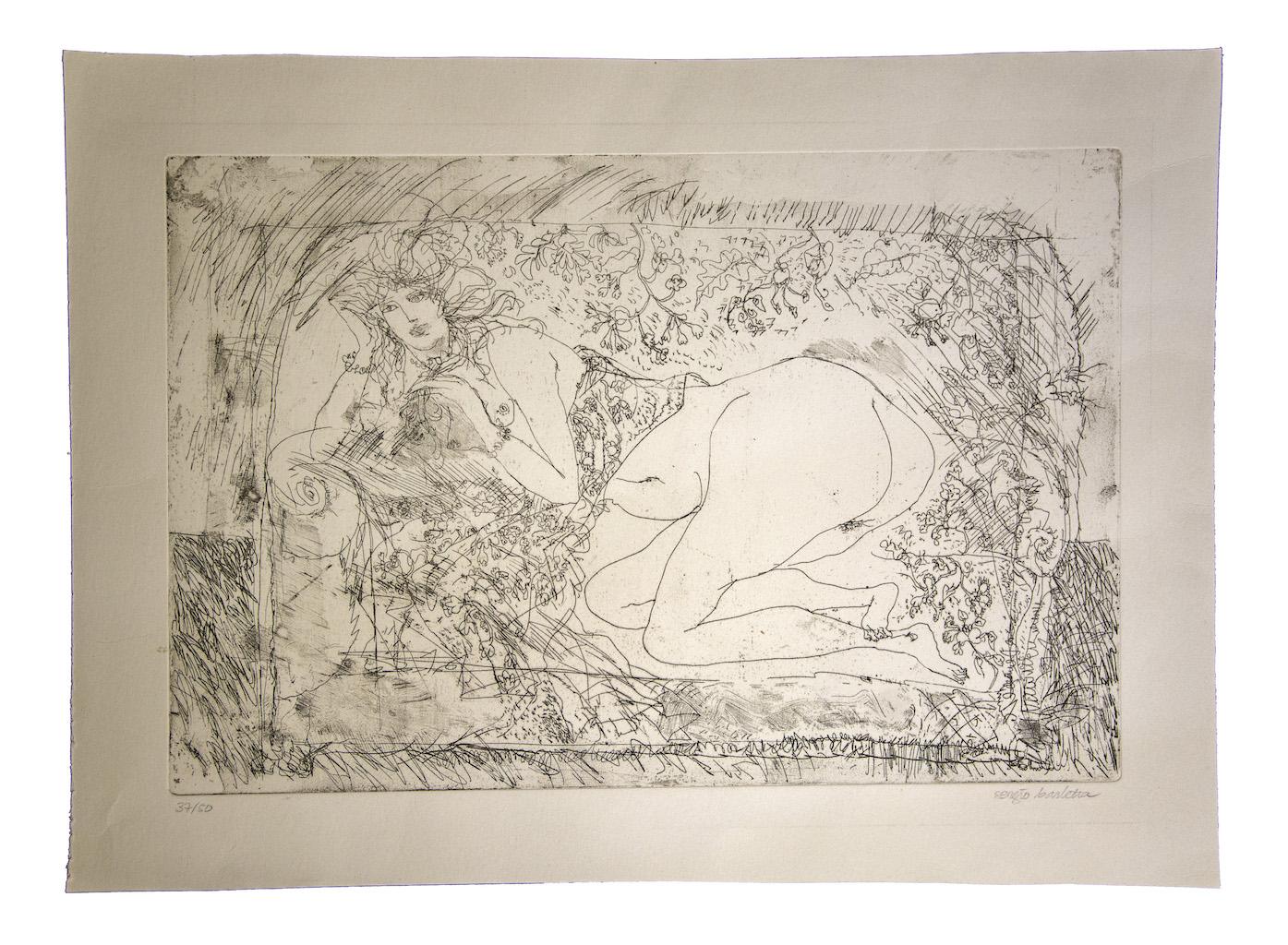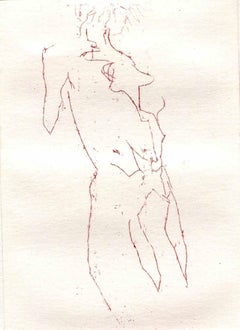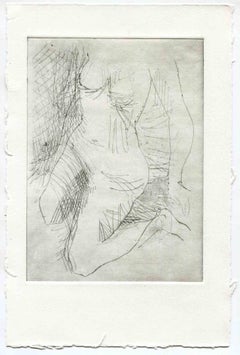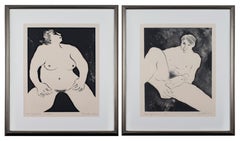Items Similar to Nude Pair Arno Breker lithograph Etching
Want more images or videos?
Request additional images or videos from the seller
1 of 12
Nude Pair Arno Breker lithograph Etching1930
1930
$1,260
£965.88
€1,105.53
CA$1,799.86
A$1,973.89
CHF 1,022.34
MX$23,717.85
NOK 12,873.66
SEK 12,082.29
DKK 8,259.34
About the Item
Arno Breker is an artist supported by the Nazi regime and a German sculptor whose neoclassical works meet the military aesthetic of the regime. Breker was born on July 29, 1900, in Elberfeld, Germany and enrolled at the Düsseldorf Academy of Arts. He left his studies in 1924, moved to Paris and met avant-garde artists like Jean Cocteau, Jean Renoir, and Pablo Picasso. Over time, Breker rejects the influence of surrealism and cubism to pursue a more conservative aesthetic. He returns to Germany when the Nazi regime comes to power, praised by Adolf Hitler who describes his work as "powerful and full of will". His sculptures often present the ideal figure of the Aryan man and are exhibited at the 1936 Olympic Games and at the entrance of the Reich Chancellery. After the Second World War, his work is denounced as fascist and falls out of favor. However, there is renewed enthusiasm for his works at the opening of the Arno Breker Museum in Nörvenich, Germany in 1985, later renamed the European Art Museum following numerous events. Breker died on February 13, 1991, in Düsseldorf, Germany.
- Creation Year:1930
- Dimensions:Height: 29 in (73.66 cm)Width: 41 in (104.14 cm)Depth: 2 in (5.08 cm)
- Medium:
- Movement & Style:
- After:Arno Breker (1900 - 1991, German)
- Period:
- Condition:a certificate from the family is available.
- Gallery Location:Pasadena, CA
- Reference Number:1stDibs: LU406316406362
About the Seller
4.9
Vetted Professional Seller
Every seller passes strict standards for authenticity and reliability
Established in 1986
1stDibs seller since 2016
217 sales on 1stDibs
Typical response time: 1 hour
- ShippingRetrieving quote...Shipping from: Pasadena, CA
- Return Policy
Authenticity Guarantee
In the unlikely event there’s an issue with an item’s authenticity, contact us within 1 year for a full refund. DetailsMoney-Back Guarantee
If your item is not as described, is damaged in transit, or does not arrive, contact us within 7 days for a full refund. Details24-Hour Cancellation
You have a 24-hour grace period in which to reconsider your purchase, with no questions asked.Vetted Professional Sellers
Our world-class sellers must adhere to strict standards for service and quality, maintaining the integrity of our listings.Price-Match Guarantee
If you find that a seller listed the same item for a lower price elsewhere, we’ll match it.Trusted Global Delivery
Our best-in-class carrier network provides specialized shipping options worldwide, including custom delivery.More From This Seller
View AllNude signed Arno Breker
Located in Pasadena, CA
Arno Breker is an artist supported by the Nazi regime and a German sculptor whose neoclassical works meet the military aesthetic of the regime. Breker was born on July 29, 1900, in E...
Category
Mid-20th Century Modern Figurative Drawings and Watercolors
Materials
Color Pencil
Nude signed Arno Breker
Located in Pasadena, CA
Arno Breker is an artist supported by the Nazi regime and a German sculptor whose neoclassical works meet the military aesthetic of the regime. Breker was ...
Category
Mid-20th Century Modern Figurative Drawings and Watercolors
Materials
Color Pencil
Nude original Lithograph EA by Alain Bonnefoit
By Alain Bonnefoit
Located in Pasadena, CA
Original Lithographe EA (Epreuve d'Artiste ) Alain Bonnefoit’s trademark female nudes reflect both Western and Eastern art historical influences. A painter, engraver, and sculptor, B...
Category
Late 20th Century Modern Figurative Prints
Materials
Lithograph
Nude original Lithograph EA by Alain Bonnefoit
By Alain Bonnefoit
Located in Pasadena, CA
Original Lithographe EA (Epreuve d'Artiste ) Alain Bonnefoit’s trademark female nudes reflect both Western and Eastern art historical influences. A painter, engraver, and sculptor, B...
Category
Late 20th Century Modern Figurative Prints
Materials
Lithograph
Pair of graphite drawings
By Ossip Zadkine
Located in Pasadena, CA
Pair of graphite drawings after Ossip Alexeevich Zadkine Osip Alekseyevich Tsadkin; 28 January 1888 – 25 November 1967) was a Russian and French artist of the School of Paris.[1] He...
Category
Mid-20th Century Art Deco Figurative Prints
Materials
Charcoal
Original watercolour Nude by Antoine Calbet
By Antoine Calbet
Located in Pasadena, CA
Antoine Calbet presents his works, mainly portraits and genre scenes, at the Salons of the Société des artistes français from 1881 until 1940, as well as at the international exhibit...
Category
1910s Art Nouveau Nude Drawings and Watercolors
Materials
Watercolor, Pastel
You May Also Like
Nude - Original Etching and Drypoint - Mid-20th Century
Located in Roma, IT
Nude is an original print in etching and drypoint on white paper realized by an Anonymous artist of the Mid-20th Century.
In very good conditions.
The artwork created through deft s...
Category
Mid-20th Century Modern Figurative Prints
Materials
Drypoint, Etching
Nude - Original Etching and Drypoint - Mid-20th Century
Located in Roma, IT
Nude is an original print in etching and drypoint on white paper realized by an anonymous artist of the Mid-20th Century.
In very good conditions.
The artwork created through confid...
Category
Mid-20th Century Modern Figurative Prints
Materials
Drypoint, Etching
'Nude Male and Nude Female, ' original lithograph pair signed by R.C. Gorman
By R.C. Gorman
Located in Milwaukee, WI
R. C. Gorman is better known for his images of colorful and elegant Navajo figures. This pair of prints, however, offers a view into his personal life. The pair of nude figures in th...
Category
1970s Contemporary Nude Prints
Materials
Lithograph
"Woman" Nude Figurative Etching
Located in Soquel, CA
Elegant nude by Suzanne Aubin Ledrew (American, b. 1942). The woman in this piece is seated, with her hand covering her face and head, turned partially away from the viewer. There is a lovely contract between the background and the figure, creating a negative shape out of the woman's body.
Titled "WOMAN" in the lower center.
Signed and dated "AUBIN LEDREW 74" in the lower right corner.
Presented in a new grey mat with a wood frame.
Image size: 12"H x 9"W
Suzanne Addicott (nee Aubin Ledrew) (American, b. 1942) graduated from California College of the Arts with a BFA in Painting and Drawing. She is an artist and teacher at Studio9...
Category
1970s Modern Nude Prints
Materials
Paper, Ink
$636 Sale Price
20% Off
Nude - Original Etching by Gian Paolo Berto - 1974
Located in Roma, IT
Nude is an original etching on paper realized by Gian Paolo Berto in 1974.
Good conditions except for small cyaways on the top and bottom margins.
H...
Category
1970s Contemporary Figurative Prints
Materials
Etching
Nude - Etching by Sergio Barletta - 1980
By Sergio Barletta
Located in Roma, IT
Nude is an original etching realized by Sergio Barletta in 1980.
Hand-signed on the lower right in pencil. Numbered, edition of 37/50 prints, on the lower left in pencil.
In very g...
Category
1980s Contemporary Figurative Prints
Materials
Etching
